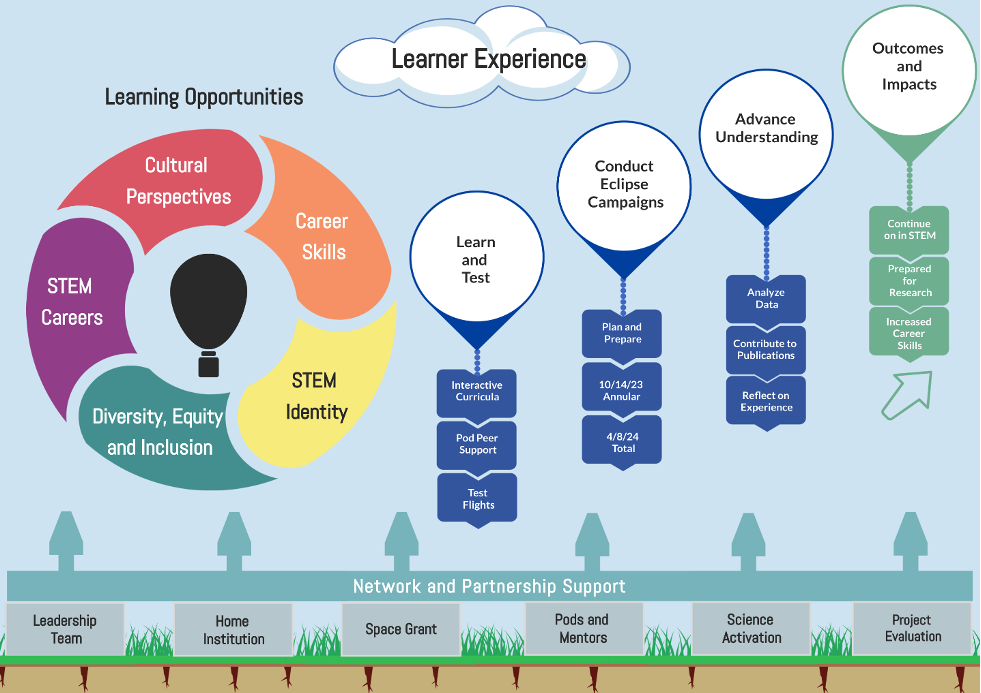Nationwide Eclipse Ballooning Project Objectives

The following goals and objectives will allow NEBP to broaden participation of STEM learners by immersing teams in an innovative NASA-mission-like adventure with scientific ballooning during the 2023 and 2024 eclipses.
- Goal 1: Enable inclusive STEM education for participating students
- Objective 1.1 Promote the development of participants’ STEM career skills by engaging them in equitable, accessible, learner-centered educational experiences
- Objective 1.2 Increase opportunities for participants to develop their STEM identities as learners and practitioners
- Objective 1.3 Advance participants’ understanding of the importance of internal, external, organizational, and worldview diversity in education and the workplace
- Objective 1.4 Grow learners’ awareness of cultural perspectives of science
- Goal 2: Advance learners’ understanding of the process of science
- Objective 2.1 Advance learners’ abilities to conduct rigorous, relevant research using scientific data they collect during eclipse campaigns as well as relevant NASA data
- Objective 2.2 Increase participation in community of STEM activities, including publishing results and sharing knowledge
- Objective 2.3 Grow learners’ understanding of and interest in STEM careers as well as access to and interaction with diverse subject matter experts (SMEs)
- Goal 3: Create, enhance, and sustain networks and partnerships
-
- Objective 3.1 Grow the number of institutions that engage learners in research involving remote sensing platforms, especially at minority serving institutions and community colleges, and grow collaborations amongst the programs
- Objective 3.2 Increase capacities among participants, leaders, and SMEs to offer inclusive, equitable STEM education by leveraging best practices and the expertise of the NEBP Education Advisory Board, Space Grant network, SciAct collaborators, and industry partners
- Objective 3.3 Advance equitable, accessible national eclipse education capabilities through collaboration with the SciAct Heliophysics Education Activation Team (HEAT) and SciAct Eclipse Soundscapes: Citizen Science Project
- Objective 3.4: Create connections with other STEM networks to grow in new directions
Scientific Questions
Building on previous results and developed in consultation with NASA SMEs, the core scientific and engineering questions to be addressed in concert with and as a result of the education activities in this proposed work are:
- Can eclipse-induced atmospheric gravity waves be definitively detected in data across all sites?
- What is the magnitude of the temperature drop at the surface, in the planetary boundary layer (PBL), troposphere, and stratosphere?
- How much time lag is there between the temperature minimum, and minimum in solar flux?
- At which altitude(s) is the temperature variation the largest?
- How do boundary layer heights vary during an eclipse?
- Is the kinematic response of the surface wind field within the path of totality instantaneous or time-lagged to the thermal response?
- How do the findings for the 2023 and 2024 eclipses compare to those for prior events?
- Can current high-resolution weather-forecasting models simulate the observed responses and improve the model physics and forecasting?
- How far can reliable streaming video be transmitted?
- Can a lower-cost scientific payload with sophisticated capabilities be developed and replicated?
